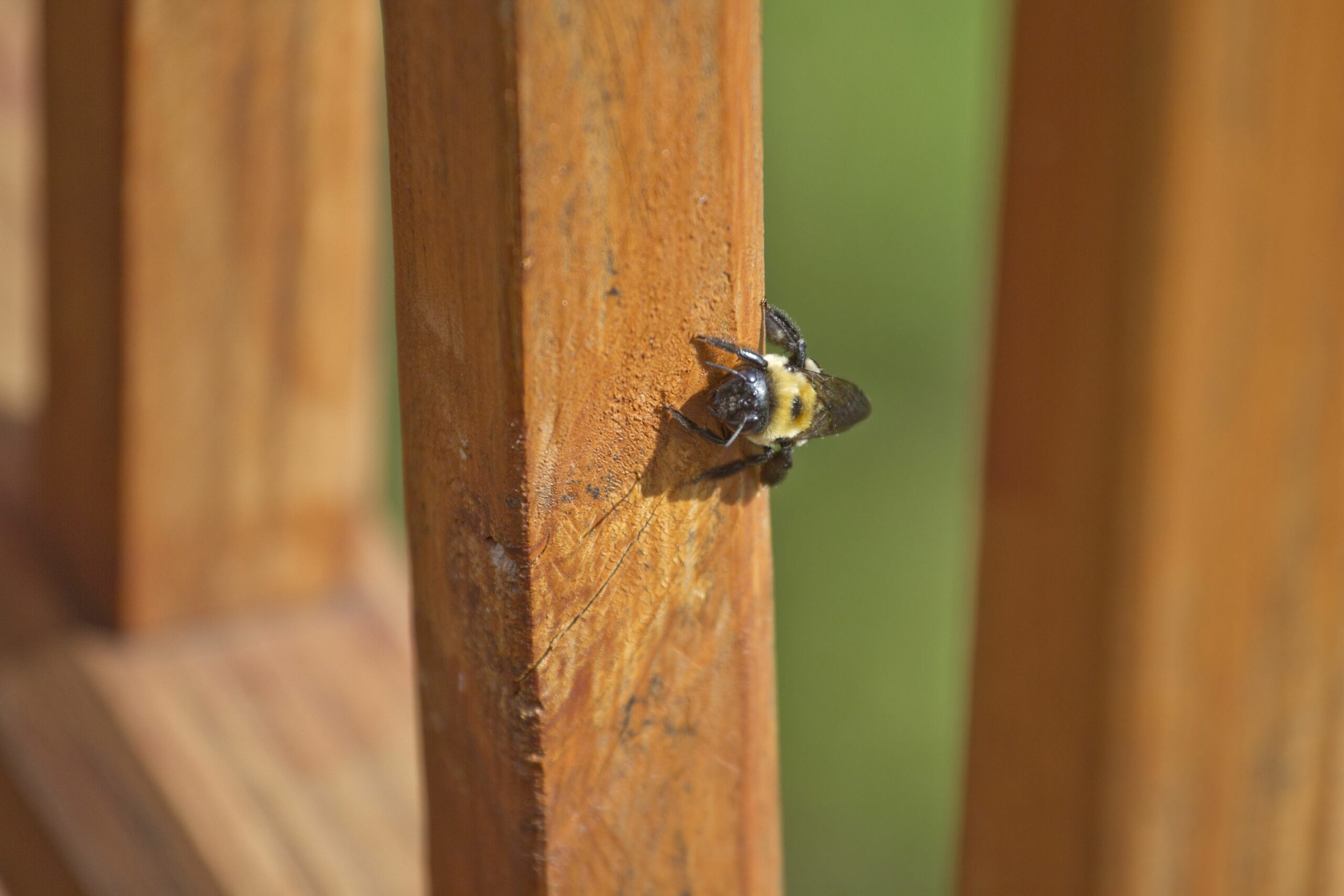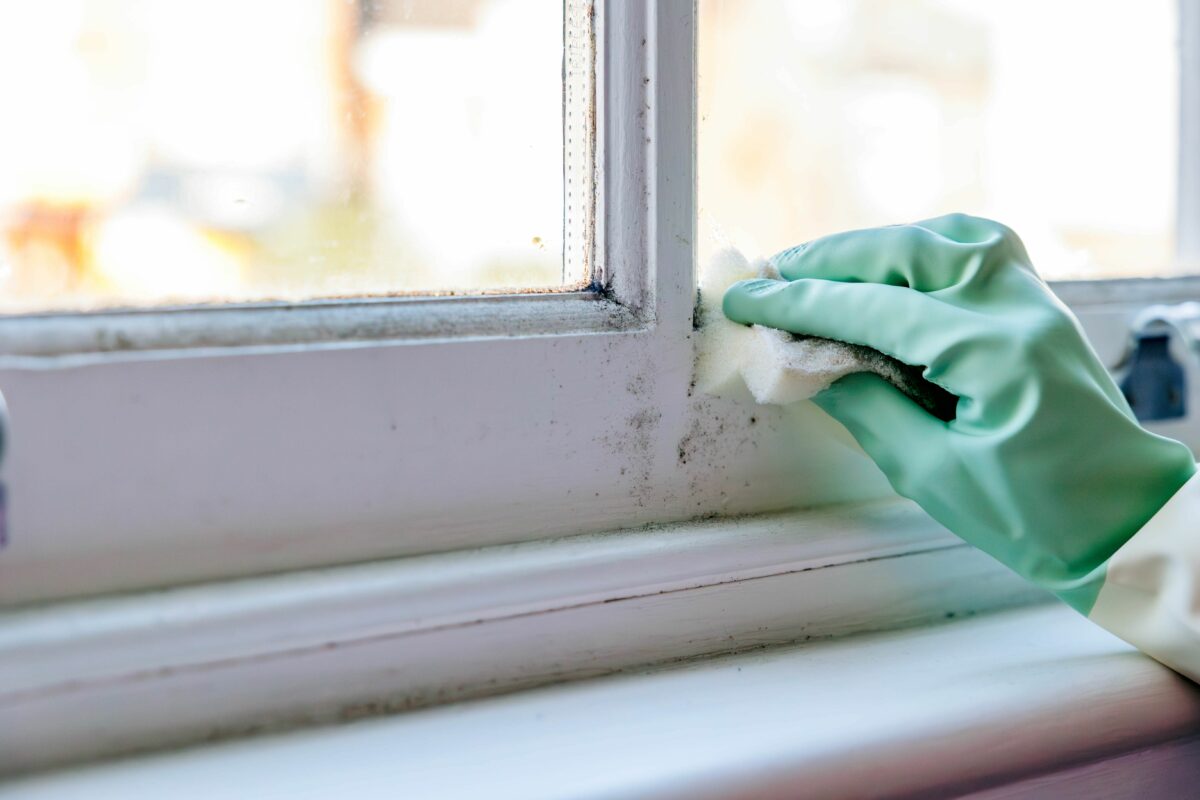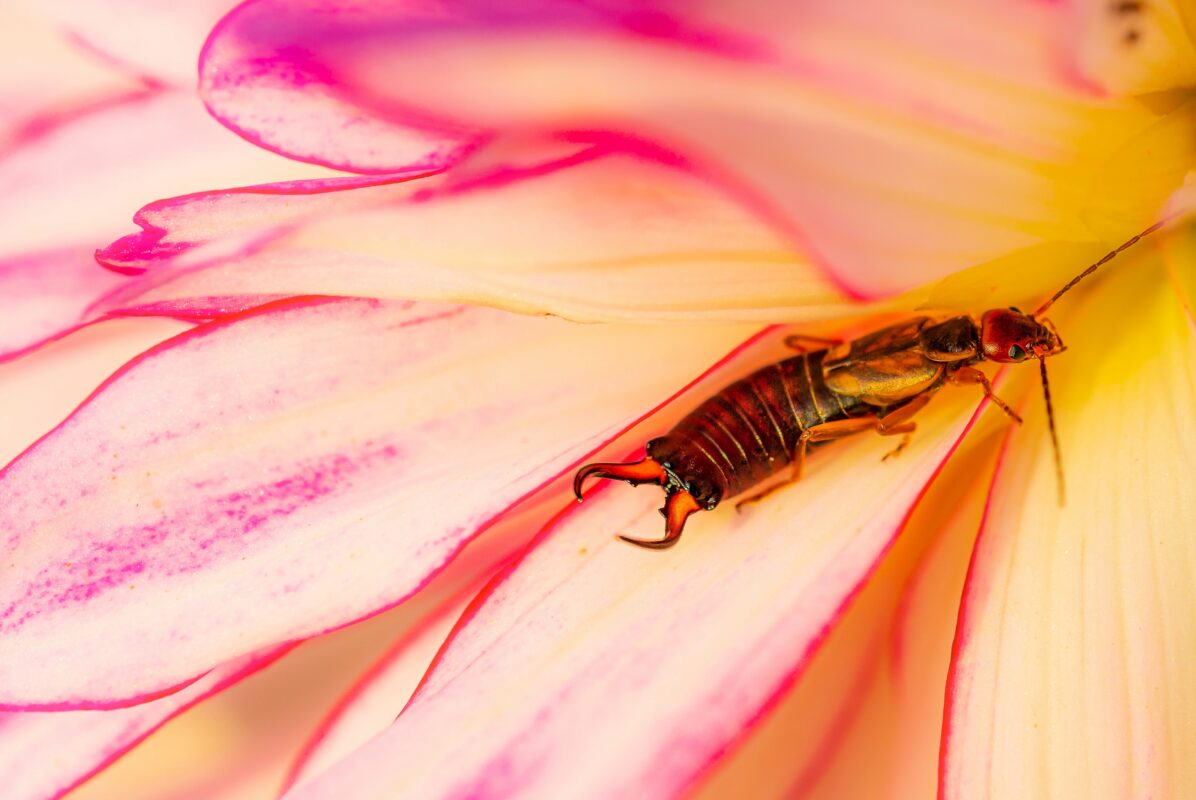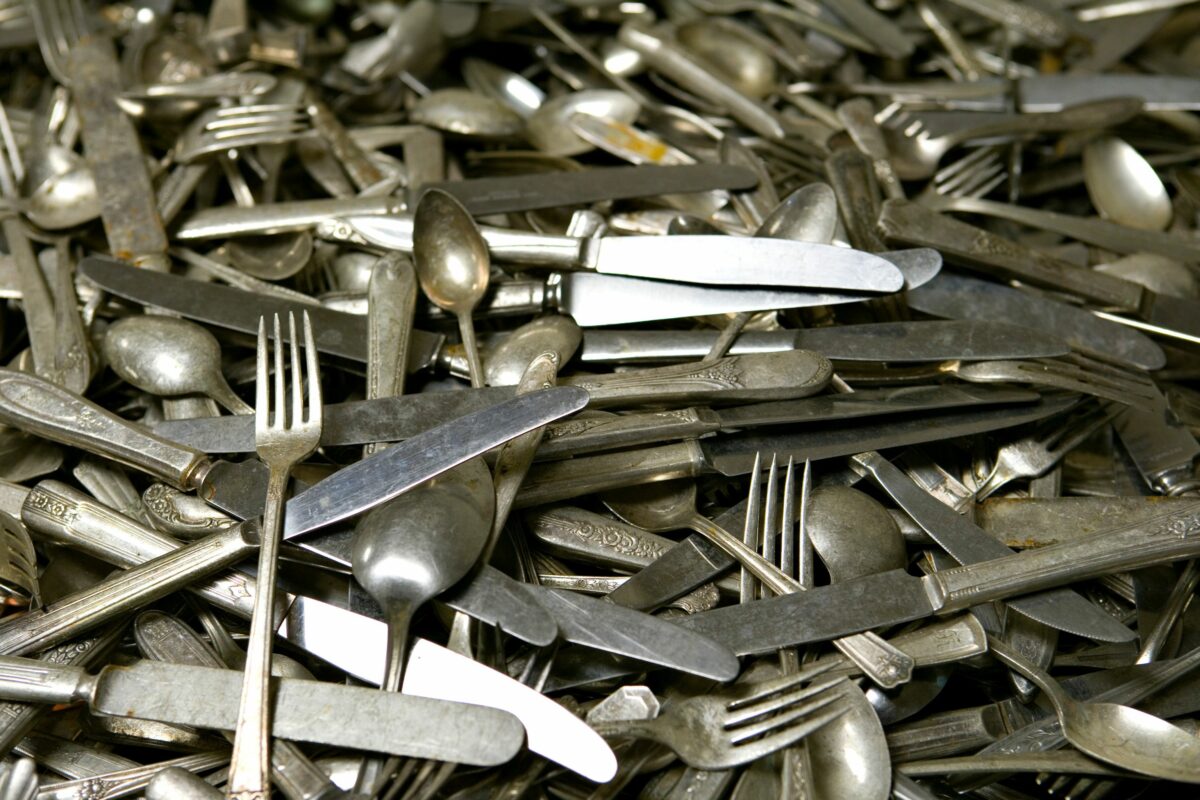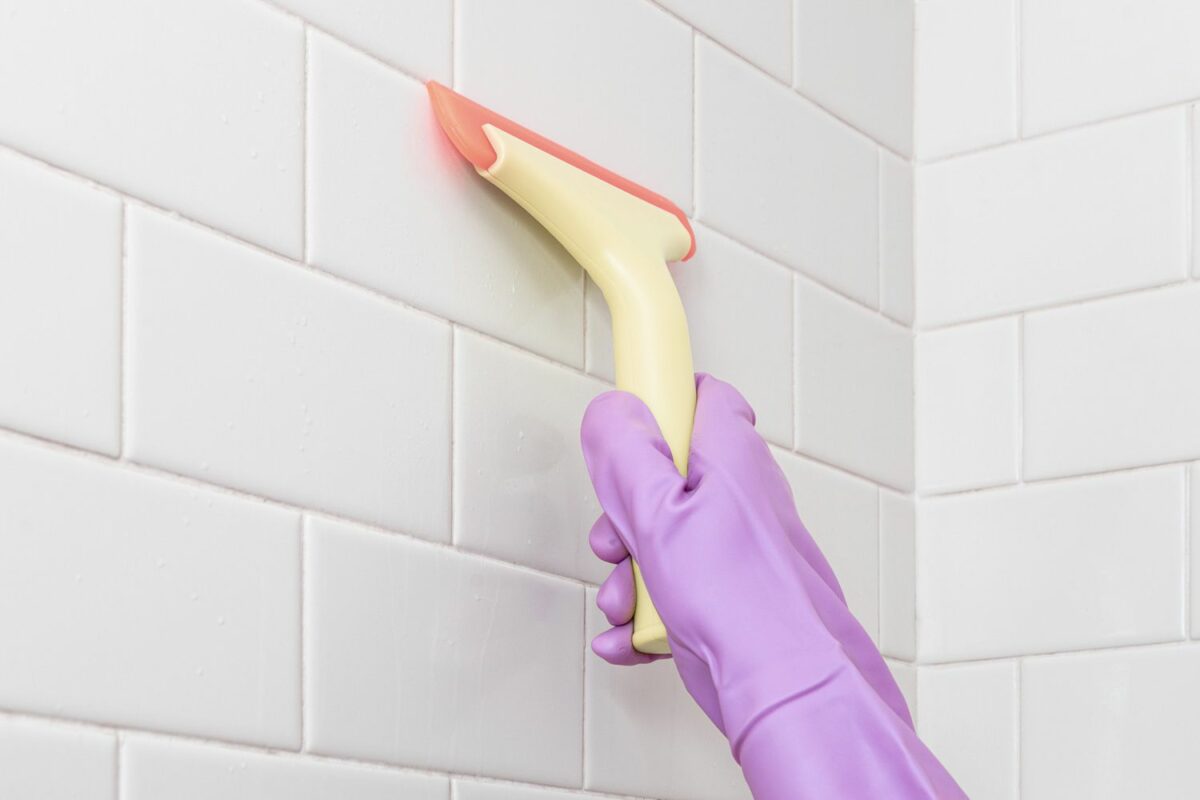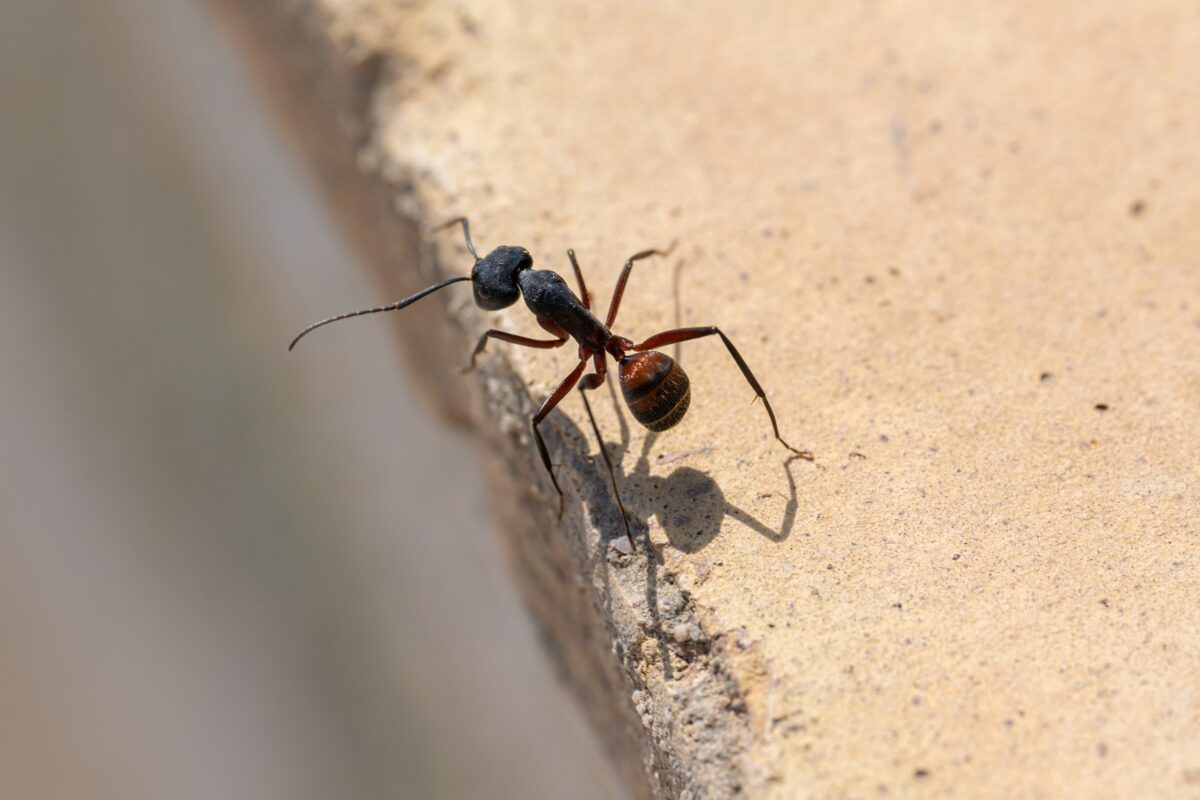Bees are welcome pollinators in any ecosystem. However, when carpenter bees land on your home or garage, they can cause serious damage. These bees are known for boring into wood to create tunnels and nest galleries. Repeated excavations over successive years can lead to moisture and decay, which affect the structural integrity of wooden structures. Worse still, woodpeckers drill into the wood, hoping to feed on carpenter bees and their larvae. Thus, effective carpenter bee removal and prevention are crucial to maintaining the integrity of wooden structures. Here is how to get rid of carpenter bees before any damage is done.
Identifying Carpenter Bees
It is easy to mistake carpenter bees for bumblebees because of their similarities in size and looks. However, unlike the bumblebee, carpenter bees have a shiny black abdomen in contrast to the bumble bee’s yellow, hairy abdomen. The male carpenter bee is aggressive, as it protects the nest, but it doesn’t have a stinger. Only female carpenter bees have a stinger, though they rarely sting unless grabbed or squeezed.
Unlike social bees, carpenter bees do not live in colonies. Instead, they excavate tunnels in wood to create nests that they return to each year. The tunnels can reach about 1/2 inch in diameter and can extend several inches into the wood. This is how carpenter bees compromise the structural integrity of homes, sheds, garages, decks, and more. In addition, the noise of carpenter bees can be disturbing, and their presence often attracts unwanted woodpeckers that cause additional damage while hunting for bee larvae.
What attracts carpenter bees?
Carpenter bees emerge in spring to mate. Then, the female builds a nest inside wood, plants, or bamboo to lay their eggs, which hatch and mature over several weeks. They are drawn to dead wood or softwoods, such as pine, cedar, redwood, and cypress, which are easier to bore into. They often choose untreated, unpainted, or weathered wood. They prefer locations that offer protection from the elements, such as eaves, window trim, fascia boards, decks, and wooden siding.
How to Identify a Carpenter Bee Infestation
The first major sign of a carpenter bee infestation is usually perfectly rounded holes of about 1/2 inch in diameter, typically located on the underside of wooden surfaces. Piles of sawdust or frass beneath the holes indicate active tunneling. Sightings of large bees hovering around wooden structures, especially in spring and early summer, suggest nesting activity. Also, increased woodpecker activity around your home hints that carpenter bee larvae lay within the wood.
How to Get Rid of Carpenter Bees
There are several natural and chemical-based ways to get rid of carpenter bees.
Carpenter Bee Traps
Purchased or DIY carpenter bee traps usually have the same design: wooden boxes with 1/2-inch holes drilled on each side and a giant hole at the bottom where a plastic or glass bottle is affixed. Once the bees enter from the side holes, they are attracted to the light from the bottom hole, which lures them to the bottle, where they become trapped. Once trapped, they can be relocated.
Carpenter Bee Houses
These houses made of untreated wood should be hung or mounted as far away as possible from your home. These houses lure the bees to nest there and return annually to lay eggs.
Citrus Spray or Essential Oils
While the smell of lemon, oranges, lime, and other citrus fruits may be pleasant to humans, it repels carpenter bees. Create a citrus spray by filling a bottle with water and squeezing in fresh citrus fruits. You can also boil citrus fruit rinds in water for a more intense scent. Spray the cooled solution into the bee holes and around the affected areas. Similarly, mix a few drops of essential oils—like eucalyptus, almond, tea tree, and peppermint—with water and spray it around nesting sites to repel carpenter bees.
Vacuuming
If the infestation is localized, suction carpenter bees out of their nests with a vacuum cleaner with a hose attachment.
Insecticides
Getting rid of an established carpenter bee infestation may require a liquid or dust commercial insecticide. Bees come into contact and carry it back to their nests, killing the larvae.
Residual aerosol sprays can be applied directly into the holes. Follow the manufacturers’ instructions for effective and safe use. These sprays typically have a long-lasting effect. Spray after dark when the bees are in their tunnels. After the bees have left the nest, plug the tunnel entrances so they do not return.
Boric Acid
When used properly, boric acid is lethal to insects but relatively harmless to humans and pets. When carpenter bees come into contact with boric acid, it adheres to their bodies and is ingested. Then, the boric acid disrupts the bees’ digestive systems and metabolic functions. This disruption leads to dehydration, starvation, and death of bees and larvae.
How to Prevent Carpenter Bees from Coming Back
After the carpenter bees have left their nests, fill the holes with wooden dowels, caulk compounds, or wood putty to prevent re-entry. Plugging will also reduce moisture damage and wood decay. Hiring a pest control service for severe infestations ensures the bees are eradicated safely and effectively.
Preventing carpenter bees from returning involves several proactive measures.
- Regularly inspect your home for holes or cracks. Seal these entryways promptly to prevent interior infestations.
- Paint wood structures with oil or polyurethane-based paint and periodically maintain and treat all exposed wood surfaces.
- Use vinyl siding or protective coverings like wire screening or metal flashing on external wood surfaces to deter bees from boring.
- Install carpenter bee traps to lure bees away.


